Before I started using Universal Audio’s DSP-powered audio interfaces, audio latency was just something I learned to cope with. Upgrading from USB to Thunderbolt was certainly part of the equation, but learning how to reduce audio latency wasn’t enough… I wanted to remove it altogether! Not possible, you say?
Digital signal processing (DSP) is the “missing link” that allows music producers to record music in zero-latency. You might be familiar with the term zero-latency monitoring since most audio interfaces have the ability to do this. However, what they CAN’T do is provide zero-latency monitoring while running plug-ins. DSP-powered audio interfaces CAN since they actually host these plug-ins using their internal processor(s). Before getting into the details though, we first need to understand why latency happens in the first place.
- If you want to reduce audio latency, you need to increase your understanding
- If you want to reduce audio latency, you need to realize that USB audio interfaces are obsolete
- If you want to reduce audio latency, you need one of Universal Audio’s DSP-powered audio interfaces
- If you want to reduce audio latency, you need to take action
If you want to reduce audio latency, you need to increase your understanding
The first thing we need to understand is that we can’t completely eliminate audio latency. There’ll always be some kind of delay because your signal needs to be buffered before reaching its destination (your monitors).
Audio signals are buffered TWO times; the “record” buffer and the “playback” buffer.
The total duration of this process is referred to as the roundtrip latency. It’s affected by a couple of factors that can be adjusted in your DAW.
- Buffer Size (32 ms, 64 ms, etc…)
- Sample Rate (44.1 kHz, 48 kHz, etc…)
- Bit Depth (16-bit, 24-bit, etc…)
Your computer’s RAM is responsible for buffering these signals to reduce what we refer to as “artifacts”.
It takes some of the strain off your computer’s CPU to increase reliability, but the larger the buffer, the more audio latency is introduced. In other words, you have to make the decision between “glitchy” recordings or audible latency.
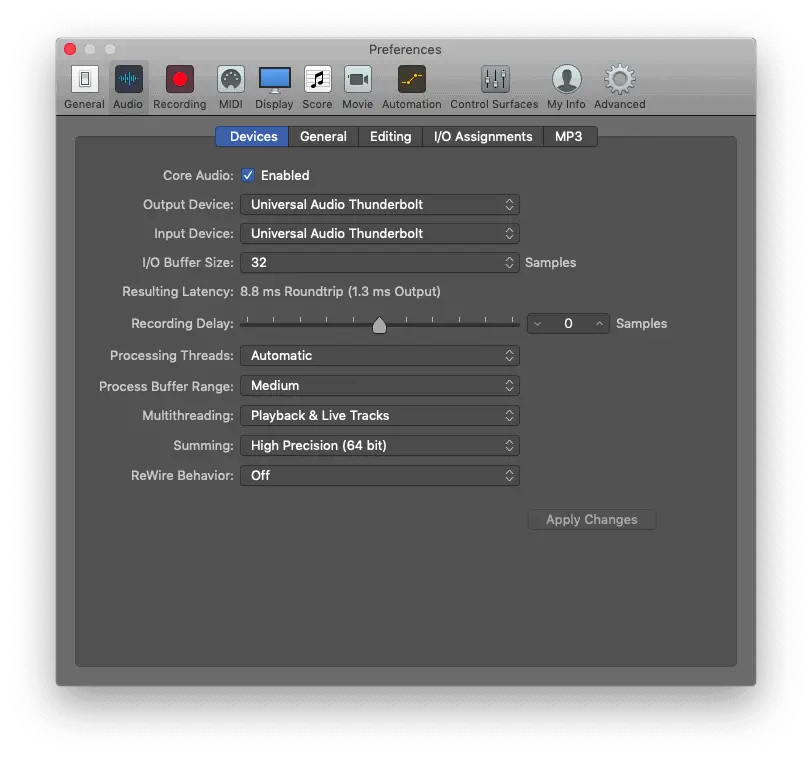
It’s a tough call, but your optimal buffer size will depend on your CPU’s performance (and single-core performance).
However, you’ll also need to factor in sample rate/bit depth in the equation. Believe it or not, higher sample rates like 48 kHz (or higher) actually reduce audio latency. The catch is it’ll put more strain on your CPU meaning you’ll need to increase your buffer size.

My personal suggestion is to prioritize audio quality versus performance (especially while recording). I usually work in 24-bit/44.1 kHz because bit depth is much more important than sample rate. Actually, most music producers are starting to realize that there’s no significant advantage for higher sample rates.
The only exception to that is if you were planning to timestretch the audio recording, BUT…
I want to stay on topic, so I won’t get too “scientific” in this blog post. Just take my word for it and you’ll be capable of getting your buffer size as low as possible. Buffer size impacts latency much more than sample rate and bit depth anyway.
Now that we’ve developed an understanding for how things work internally, we need to consider the external component of this process.
Keep reading to find out why your USB audio interface is part of the problem.
If you want to reduce audio latency, you need to realize that USB audio interfaces are obsolete
It doesn’t matter if it’s USB 2.0, USB 3.0 or even USB 3.1 because increased bandwidth DOES NOT result in decreased audio latency. That’s one of the biggest misconceptions out there, but all USB audio interfaces have one thing in common…
They all rely on drivers to communicate with your computer’s CPU.

What this means is that your roundtrip latency will always be capped by your driver’s efficiency.
To be completely honest, the USB protocol was never designed to deal with audio, yet alone video processing! This is why Apple and Intel have been hard at work developing new busing protocols over the last few decades.
FireWire was one of the first alternatives made available to consumers.
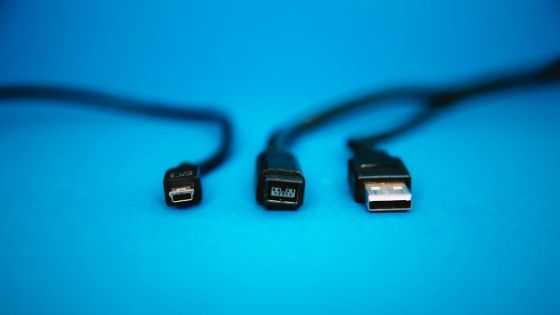
Before these high-performance external audio interfaces were released, professional music producers were relying on PCI Express audio interfaces. Although they’re still used by some, most professionals prefered the convenience of these new FireWire audio interfaces.
However, Apple and Intel didn’t stop there and eventually released the Thunderbolt protocol.

Why are these newer protocols superior to USB though?
The answer is simple… They were designed to have devices communicate directly to your computer’s CPU (no drivers). Essentially, it’s as close as you’re gonna get to physically inserting these devices into your computer’s motherboard.
It’s true that Thunderbolt 3 offers 40 Gbps of bandwidth, but remember, that’s NOT what affects audio latency.
The disadvantage of USB audio interfaces is that we’re limited by drivers, regardless of our computer’s performance.
The advantage of Thunderbolt audio interfaces is that we’re now ONLY limited by our computer’s performance.
The Thunderbolt 3 protocol even offers other advantages like being capable of powering devices that would otherwise require external power. Other than that though, all of the Thunderbolt protocols are identical (except for bandwidth).
One big issue with Thunderbolt technology is that it’s exclusive to Apple computers. You CAN install a PCI Express Thunderbolt adapter on your Windows machine, BUT…
It’ll require drivers, which defeats the entire purpose.
There’s still hope though because we still haven’t covered the most important element; DSP.
If you want to reduce audio latency, you need one of Universal Audio’s DSP-powered audio interfaces
I only recently upgraded to Apple computers because I wanted the industry-standard. If you insist on staying with Windows though, don’t worry because there are in fact USB audio interfaces with built-in DSP.
Digital signal processing isn’t new, but only in recent years has Universal Audio made it incredibly accessible (and affordable, relatively speaking).
They manufacture audio interfaces with built-in DSP where in the past, this all-in-one solution didn’t exist. They even curated hundreds of high-quality analog modelled plug-ins that can truly benefit from the upgrade.
In essence, they’ve created the perfect marriage of analog hardware and digital software.
Using their proprietary software, Console, you can host these exclusive plug-ins in real-time using the integrated DSP processor. In other words, you can record using world-class plug-ins that sound EXACTLY like the hardware they emulate with NO LATENCY!
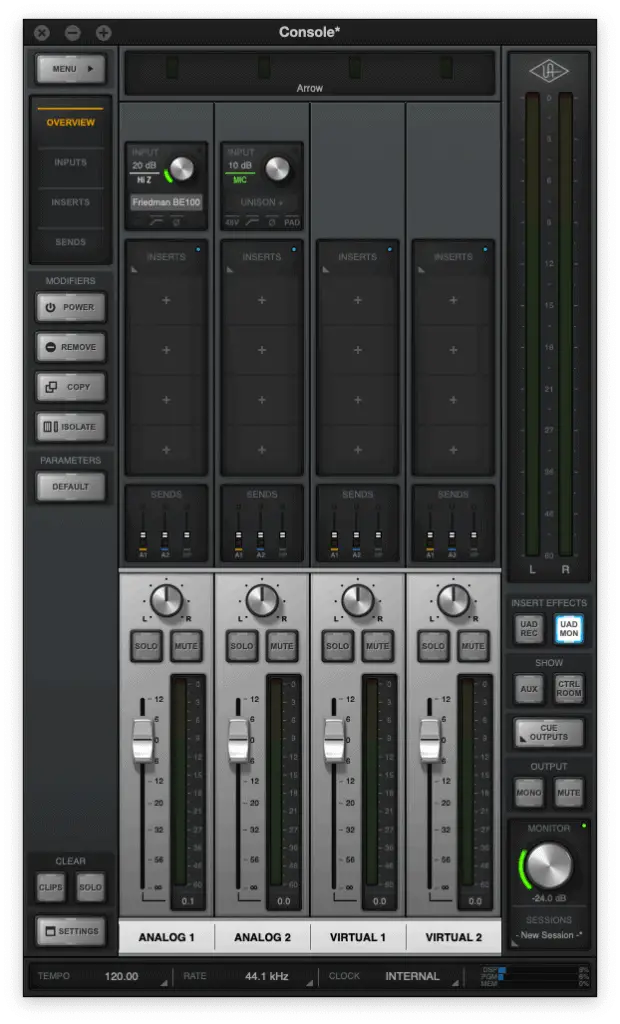
It literally takes all the strain off your computer’s CPU as if you were recording (and monitoring) through an actual piece of physical hardware.
Universal Audio has truly revolutionized music production and trust me, it’s exclusive to them. Before finding out about their products, I was literally using the amp modelling software included in my Zoom H4n Pro to avoid latency. It’s impossible to monitor in zero-latency while using amp modelling plug-ins through your DAW.
Everything up to this point has disregarded the use of plug-ins while recording.
Anybody could monitor in zero-latency by monitoring directly through their analog output. That’s great if you’re recording through an amplifier or some other piece of hardware, but what about those of us who work with software almost exclusively?
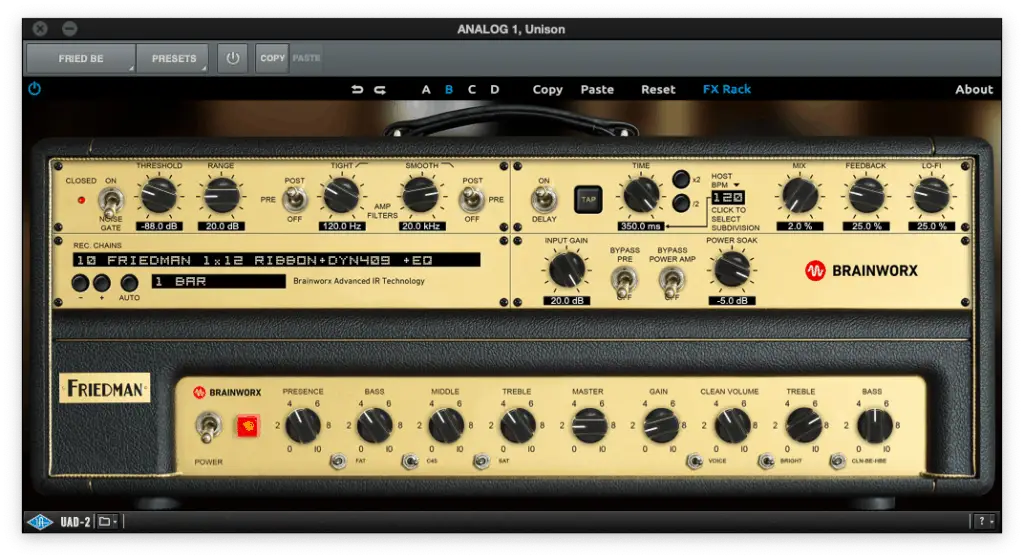
I’m guessing that’s why you’re here. You want to know how to reduce audio latency using plug-ins in real-time, correct?
After purchasing my Arrow Thunderbolt 3 audio interface from Universal Audio, audio latency has never been an issue. It doesn’t exist anymore in my life.
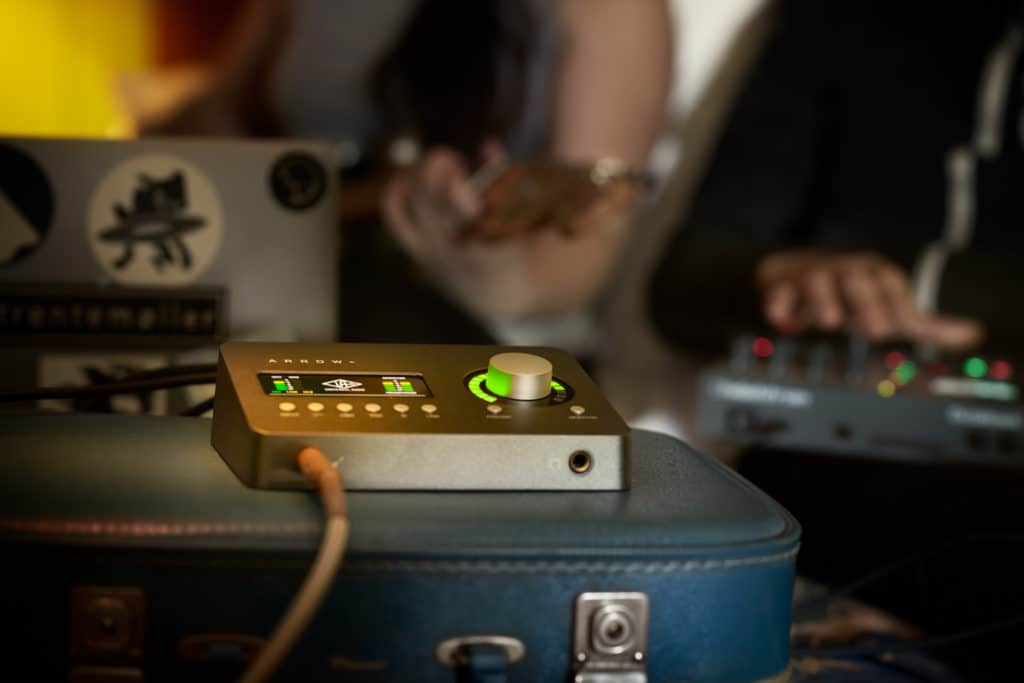
Regardless of your current setup, Universal Audio has an audio interface that will work for your home recording studio:
- Apollo Twin USB
- Apollo Twin MkII (Thunderbolt 2)
- Apollo Twin X (Thunderbolt 3)
- Arrow (Thunderbolt 3)
They have bigger audio interfaces for bigger projects, but the models I just mentioned make it possible for small music producers like you and I to achieve BIG things at home.
I highly recommend checking out Universal Audio. I personally use the Arrow and have written an in-depth product review (I’m just scratching the surface in this post).
So, what’s next?
If you want to reduce audio latency, you need to take action
Less than a year ago (at the time of writing), I was still using my home-built Windows machine paired with my Zoom H4n Pro as my audio interface. As ridiculous as that sounds, I made it work at the time, but what was it that pushed me to take such a big leap forward?
It’s simple… I realized that my music career was becoming more important to me than anything in the world.
I adopted the mindset of someone who actually wanted to offer the best quality service my hard-earned money could afford. I stopped settling for mediocrity and decided to invest into my passion; music production.
In 2020, audio latency is a result of indifference because we HAVE the solution.
Just to be clear, I DO NOT worship Apple as a company. In fact, I hate them just as much as you do (I’m serious, I really do), but they have the right tool for the job.
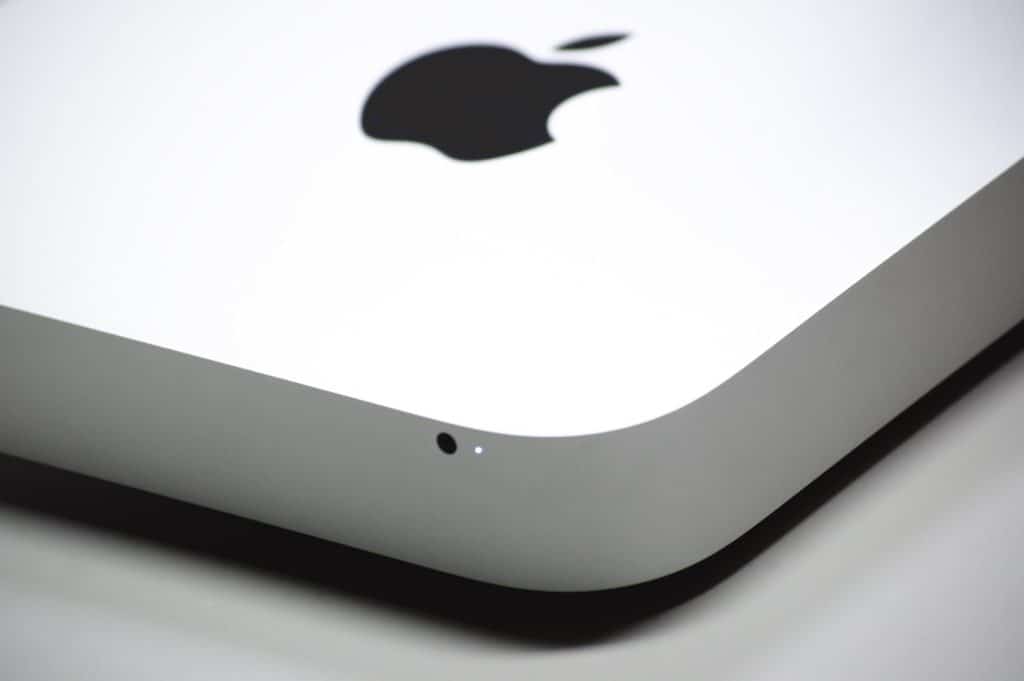
It took quite some time for me to realize that, but if you’re still on the fence, you need to at least realize the value Universal Audio is bringing to the table. Their business, on the other hand, I rave about from the bottom of my heart!
Before sending you off, I simply wanted to summarize a few points:
- While recording, set your project to 24-bit/44.1 kHz and adjust your buffer size accordingly (as low as you can go)
- While mixing/mastering, you can actually increase your buffer size to reduce the load on your CPU
- When purchasing computers, make sure you’re looking at their CPUs’ single-core performance above all else
- USB technology is becoming obsolete and quickly being replaced by Thunderbolt technology
- DSP-powered audio interfaces from Universal Audio will change your life!
So, if you want to reduce audio latency and eliminate it once and for all, you now know what kind of action you need to take.
I recommend starting with my review of the Universal Audio Arrow and taking it from there…
If nothing else, I hope this blog post has inspired you to see the possibilities that are currently out there. My goal is to eliminate unnecessary issues such as audio latency so that we can focus on what counts; making music! Do you have any questions or concerns? Feel free to post them in the comments and remember to subscribe to my newsletter if you’d like to stay up to date with my latest content and to share this post with another music producer. As usual, thanks for reading!


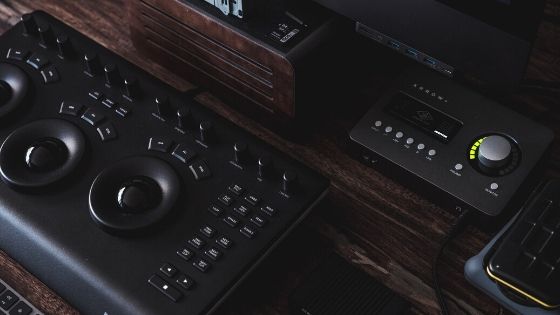
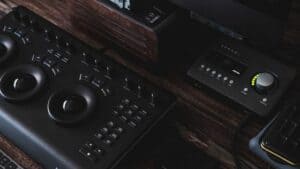
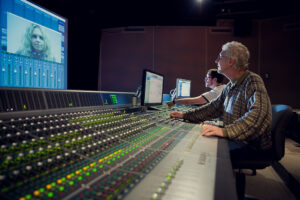

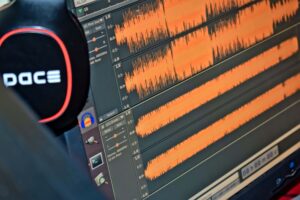

6 thoughts on “How To Reduce Audio Latency”
Hi there. Thanks for the informative insight. Will the UAD DSP be able to reduce the waves plugins latency? Thanks.
Hello Aditya!
I’m glad you found the article useful. To answer your questions, Universal Audio DSP only works with UAD plugins.
The only way to reduce latency for your other plugins would be to upgrade your CPU. That being said, unless you plan on recording through your Waves plugins, it’s not necessary.
I only record using UAD plugins. The other plugins I use in post-production when latency isn’t an issue.
Basically, you need to ask yourself if you’d be better off with a better CPU or if you’d be better off making the switch to UAD. Either way, the pricing would be about the same.
Let me know if you need anything else. I hope that answer exceeded your expectations.
Take care!
– Stefan
Thanks for sharing insight into what causes audio latency and how to balance settings for the best overall effect. I like your plan to prioritize audio quality versus performance when recording. I hadn’t thought much about what effect the USB devices would have on the overall sound and quality, but it’s a good thing to be aware of.
I’ve got a number of things to go look at in my recording setup and refer back here for guidance. Thanks for sharing!
Hey Aly!
I’m glad to see you agree with prioritizing audio quality. The truth is, it should never get to the point where you’re compromising anything, but audio quality is king because you can’t increase it once it’s been recorded.
If you still experience latency while recording though, I recommend using your audio interface’s zero-latency monitoring. This is what I do, but with Universal Audio devices you can achieve this while still using plug-ins in real-time. Regardless of the performance of your computer, you’ll be capable of doing much more without upgrading your entire machine.
Thanks for reading, if you have any future questions, feel free to ask them!
– Stefan
Very interesting read on a subject I was actually not very familiar with. I see that RAM and CPU play a part in reducing audio latency. Are there any computers or programs you recommend as best products for eliminating the most audio latency possible? I see that you recommend Apple, as it is the industry standard, but I am not quite able to purchase something in Apples price range as of yet. Which pc would be best? thanks.
Hey Ashley!
I think you can achieve fantastic results with whatever computer you’re currently using by investing in one of Universal Audio’s devices. If you’re using Windows, you’ll most likely need the Apollo Twin USB which includes all the computer software you need to record in zero-latency.
Their devices work hand-in-hand with their plug-ins (virtual amplifiers, effects, auto-tune, etc…). This setup is perfect for those who don’t have the means to purchase high-end computers and makes it possible to record using these plug-ins in real-time like a physical piece of analog equipment.
However, I’m not an expert of pre-built PCs, I usually build my own so I can’t give you any honest recommendations. If you’re interested though, I can recommend an appropriate CPU and RAM for your needs.
Thanks for stopping by, I hope I answered your questions!
– Stefan